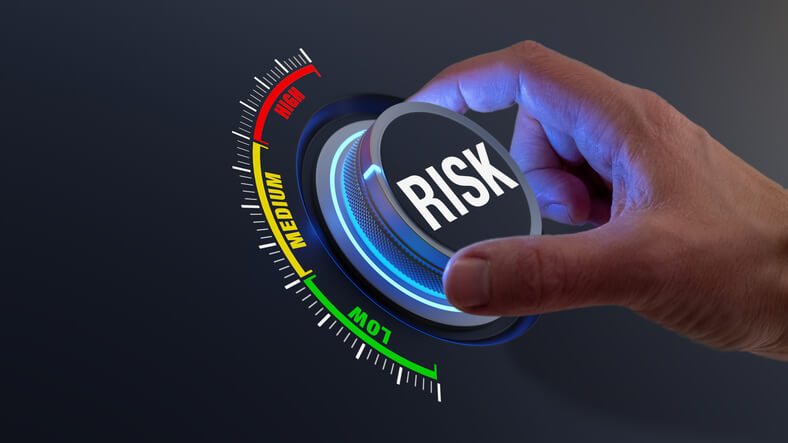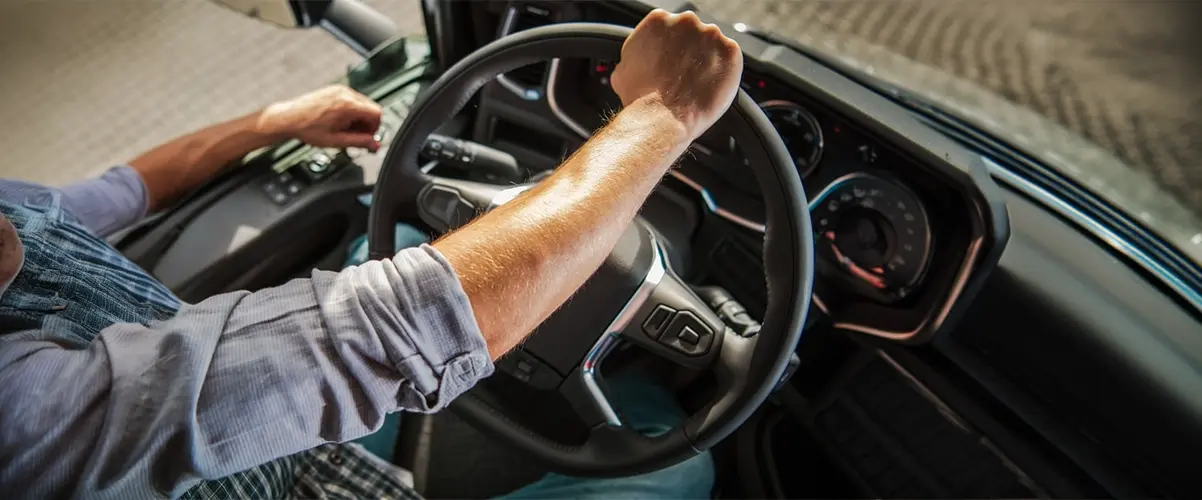
Need to know how to get a CDL? This guide will take you through each essential step. We’ll cover requirements, obtaining a learner’s permit, training, and the final skills test.
Table Of Contents
Key Takeaways
- To obtain a CDL in Texas, applicants must provide proof of identity, U.S. citizenship or legal presence, Texas residency, and pass medical and knowledge tests.
- Securing a Commercial Learner’s Permit (CLP) is a crucial step, requiring a valid Texas driver’s license, passage of knowledge tests, and a small application fee.
- Completing the Entry-Level Driver Training (ELDT) from an FMCSA-approved provider is mandatory before attempting the CDL skills test.
Understanding CDL Requirements
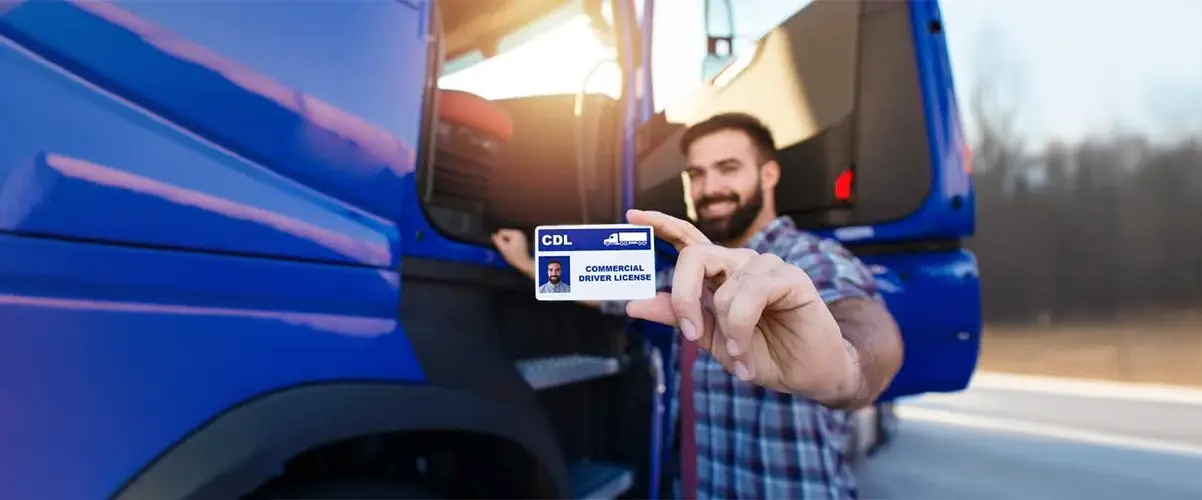
Before you can rule the roads, you’ll need to understand the stepping stones to obtaining your commercial driver’s license. It’s not just about being able to handle a vehicle; it’s also about ticking all the boxes of legal and regulatory requirements to issue commercial driver’s licenses. To begin, aspiring CDL holders must:
- Provide undeniable proof of their identity, U.S. citizenship, or lawful presence, including a valid driver’s license
- Brandish a Social Security Number like a badge of honor
- Clutch onto your valid Texas Driver License – it’s your golden ticket to the CDL world.
Imagine the Lone Star State as your home base? You’ll need to plant your roots firmly with proof of Texas residency to embark on this journey. But it’s not just about where you’re from; it’s also about how fit you are to take the helm. A medical examiner’s certificate or DOT physical will be your shield, proving that you’re medically equipped to command a commercial vehicle. And let’s not forget the gatekeepers – the knowledge tests. These are your trials by fire, designed to ensure you have the mental mettle to handle the responsibilities of a commercial driver.
Obtain a Commercial Learner’s Permit (CLP)
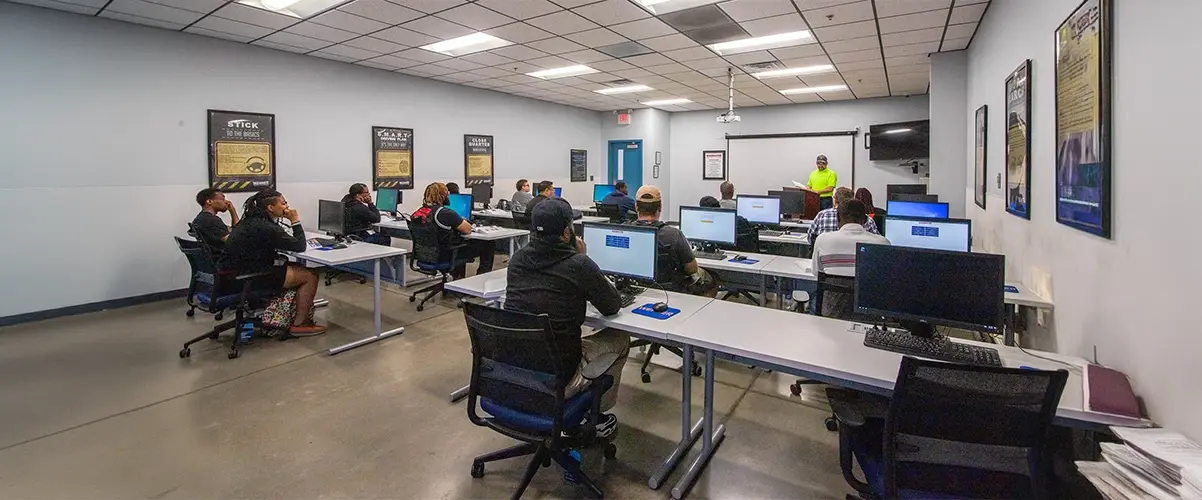
Grasping the commercial learner’s permit (CLP) is kind of like holding the North Star in your hand – it guides the way to your full-fledged CDL. The CLP is your practice permit, a promise that you’re on the right path, allowing you to hone your skills on public roads with a seasoned CDL holder by your side. In the land of cowboys and cattle, the application fee for this permit is a modest investment of $10.00 at a DMV office, a small price to pay for the freedom of the road.
But don’t rush to the rodeo just yet; you’ll need your trusty Texas driver’s license in hand to apply for a CLP in the state. And like a cowboy preparing for a bull ride, you’ll need to pass the knowledge tests to prove you’ve got the grit for this gig. The good news? You can saddle up with sample CDL knowledge tests to giddy up your preparation.
Once you’ve got your CLP, it’s valid for one year – ample time to tame the beast that is the CDL road test.
Eligibility for CLP
To earn your spurs and become eligible for a CLP, you must first reach the ripe age of 18 for intrastate driving, or 21 if you’re yearning to cross state lines with your cargo or dabble in transporting hazardous materials. Proof of your legal presence in the U.S. is non-negotiable – you’ll need to demonstrate your right to ride the range of U.S. highways. States like Texas are particular about this; they require documents that vouch for your name and residency when applying for a CLP.
While the open road calls, there’s no federal mandate to complete entry-level driver theory training before you apply for your CLP. However, don’t let that lull you into complacency; the knowledge you gain from training is as essential as a lasso to a cowboy.
Required Knowledge Tests
Imagine the knowledge test as your first cattle drive. To wrangle a CLP in Texas, you’ll face the formidable knowledge exam. This test is your proving ground, split into three parts that will test your mettle: General Knowledge, Air Brakes, and Combination Vehicles. In this context, understanding the gross combination weight rating is essential. Should you aim to be the shepherd of school children or the pilot of passengers, the endorsement tests for Texas CDL are your next hurdles. Each contains 20 questions – miss more than four, and you’ll face the disappointment of a cowboy who’s lost his hat.
These required knowledge tests are the sagebrush you must clear to pave the way for your commercial driving future. They’re not just hurdles; they’re the foundation of your trucking expertise, the bedrock of your driving prowess. With each correct answer, you stake your claim to the commercial driving world.
Application Process
The application process for a CLP in Texas is like preparing for a long haul. You’ll need to provide your Social Security Number, as if to say, “I’m ready for the long ride ahead”. Fingerprinting is part of the journey too – a unique signature that says you’re ready to join the ranks of commercial drivers. It’s not just about proving who you are; it’s about marking your territory in the CDL landscape.
Think of this application process as your first logbook entry. It’s a record of your commitment to the CDL journey. Each step, each document, and each fee is a mile marker on the road to becoming a licensed commercial driver. It’s your story, written in paperwork and perseverance.
Complete Entry-Level Driver Training
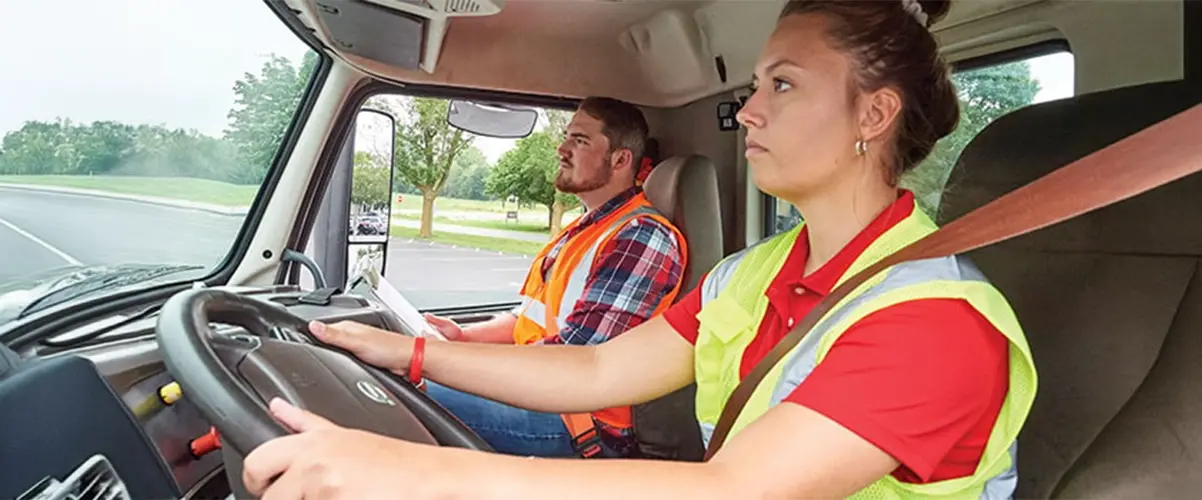
With your CLP secured, the next waypoint on your map to CDL mastery is the Entry-Level Driver Training (ELDT). Since February 7, 2022, this has been a rite of passage for all CDL applicants in Texas, a necessary quest to ensure you’re ready for the ultimate challenge – the CDL skills test. This training is not just a formality; it’s where the rubber meets the road, where you learn the ropes from seasoned professionals.
In the heart of Texas, you must seek out an FMCSA-approved training program, like a cowboy in search of the finest horse. Only providers listed on the FMCSA Training Provider Registry can saddle you with the skills you need to pass the test. These are the blacksmiths who will forge your commercial driving skills, the mentors who will guide you through the intricacies of handling a massive rig. And once you’ve completed your training, these providers will stamp your name into the digital annals of the Training Provider Registry, certifying that you’re ready to take the reins.
Registered Training Provider
The quest for a registered training provider is akin to finding a trustworthy steed; it’s essential for a successful journey. To meet the ELDT requirements, your chosen training provider must be a knight of the FMCSA Training Provider Registry, sworn to uphold the highest standards of commercial driver training,. In Texas, commercial driving schools must pledge allegiance to the FMCSA through the Training Provider Registry to earn the honor of being an approved ELDT provider.
Selecting a registered training provider is the cornerstone of your training. It’s the difference between learning to ride a horse and mastering the art of the rodeo. These providers are your gateway to the knowledge and skills necessary to thrive in the commercial driving arena. Choose wisely, and you’ll be on the fast track to CDL success.
Behind-the-Wheel Training
Behind-the-wheel training is where the theory you’ve absorbed meets real-world application. It’s the difference between knowing the path and walking the path. Whether you’re a local or hail from another state, the vehicle you bring to your driving test must comply with the registration laws of your home state – ensuring it’s as ready for the test as you are. And just as a cowboy must have a clear reputation to ride with the herd, you must not be listed as an excluded driver on the insurance policy of the test vehicle.
This practical training aspect is not just about getting behind the wheel; it’s about proving you can control a beast of a vehicle with precision and safety. Vehicle compliance, including the gross vehicle weight rating, is crucial here; it’s the saddle of your training, the gear that must be in perfect condition for you to ride confidently into the skills test.
Preparing for the CDL Skills Test

Once you’ve traversed the landscape of ELDT, the next mountaintop to conquer is the CDL skills test. This is where everything you’ve learned is put to the test – literally. Comprising three parts: Vehicle Inspection Test, Basic Controls Test, and Road Test, this skills test is a triathlon for truckers. It’s not uncommon for aspirants to stumble on this rugged terrain, as failing any part of the practical exam results in failing the entire test.
Your preparation should be as thorough as a pre-trip inspection, with special attention to the Air Brake Check information – a common stumbling block for many applicants. The pre-trip inspection, a critical part of the test, can begin at any section of the vehicle: the front, middle, or with the trailer, just as a journey can start in any direction.
Practice with a Supervising Driver
Practicing with a supervising driver is like having a seasoned trail guide; their experience is invaluable as you navigate the road to CDL proficiency. The FMCSA mandates that you complete behind-the-wheel training before taking the skills test – a testament to the importance of hands-on experience. With an experienced driver at your side, you’ll be able to identify and rectify errors, fine-tuning your skills like a musician perfecting a symphony.
Your supervising driver is more than just a passenger; they’re a mentor who provides real-time feedback and guidance. They’ll help you anticipate the twists and turns of the road test, sharing wisdom that can only come from years behind the wheel.
Focus Areas
In the CDL skills test, there are battlegrounds where the fight for your license will be won or lost. The CDL Manual, in its Sections 11-13, spells out the skills test requirements like a treasure map to success. Key focus areas, such as air brake checks and pre-trip inspections, should be practiced until they’re as familiar as your own reflection. Mastering maneuvers like the roadside stop is also crucial; these are the sharpshooting skills of the CDL world, where precision and calm under pressure are everything.
Focusing on these areas is like a blacksmith tempering steel; it’s about reinforcing your skills until they’re unbreakable. When the day of the test arrives, these practiced maneuvers will be your arsenal, ready to deploy with confidence and ease.
Schedule and Take Your CDL Road Test

Scheduling your CDL road test is like plotting a course for the final leg of your journey. In Texas, you can set the date for your showdown with destiny up to 180 days in advance, using the online appointment system – a window of opportunity that allows you to choose your moment,. The period between obtaining your CLP and taking the road test can span from 14 days to an entire year, giving you the flexibility to ensure you’re as prepared as a scout on a mission.
You’ll also need to bring your own vehicle to the test, complete with proof of insurance – the steed and shield for your battle to earn the CDL. No temporary victory medals are awarded here; after passing the road test, you won’t receive a temporary CDL. Instead, you’ll await the official document, which signifies your rite of passage into the commercial driving world. And should you need a second attempt, the fee for rescheduling is $40.00 – a small toll for a second shot at glory.
Scheduling Your Test
Scheduling your CDL road test is a solo adventure; the Customer Service Center won’t set the date for you. It’s a path you must tread online, where you can also reschedule or cancel your appointment if fate throws a curveball your way,. This autonomy is a microcosm of the trucker’s life – you’re the master of your journey, responsible for every turn and every stop along the way.
This step is as much a part of the process as the test itself. It’s your declaration of readiness, your challenge to the examiners: “I am ready to prove my skills.” So choose your date, prepare your vehicle, and set your sights on success.
What to Expect During the Test
The road test is your moment in the spotlight, where you demonstrate your prowess as a future commercial driver. You must supply your own vehicle, along with its proof of insurance – these are the tools of your trade, the instruments of your performance. While you don’t need to be listed on the insurance policy, being marked as an excluded driver is akin to a ban from the rodeo – it’s a deal-breaker.
Even a freshly purchased vehicle with paper plates can be your chariot for the exam, provided they’re buyer plates, not dealer plates – a reminder that this test is about your skills, not the vehicle’s history. The test itself is a microcosm of the trucker’s life: an exercise in precision, control, and adherence to the rules of the road. Bring your A-game, and the road will be yours to command.
Additional Endorsements
Venturing beyond the CDL, additional endorsements are like secret keys unlocking doors to new realms within the commercial driving kingdom. These endorsements can propel your career forward, granting you the authority to navigate diverse terrains, from hazardous materials to crowded school zones. Securing a Hazardous Materials Endorsement (HME) involves not just passing a written test, but also a thorough TSA background check – a testament to the gravity of the responsibility you’ll carry.
Imagine the pride of driving a school bus or a passenger vehicle; these endorsements require a special kind of commercial driver’s license holder, one who is not only adept at maneuvering large vehicles but also at safeguarding precious cargo. To obtain the School Bus or Passenger Endorsement, brace yourself for additional knowledge and skills tests, each designed to ensure the safety and well-being of every passenger on board. Remember, the journey doesn’t end with the CDL; these endorsements are the milestones for those who seek to go the extra mile.
Hazardous Materials Endorsement
The Hazardous Materials Endorsement is an emblem of trust, awarded only to those who have proven their reliability and dedication to safety. The TSA’s security threat assessment is the gatekeeper here, requiring applicants to undergo fingerprinting, a background check, and confirmation of U.S. citizenship or legal residency,. Fingerprinting is a rite of passage, conducted through an appointment with IdentoGo by MorphoTrust USA, along with a non-refundable fee.
Once your prints have been sent to the FBI and your eligibility is determined, you must submit the CDL Application and Texas Hazardous Materials Endorsement Application in person at the driver license office. Upon approval, a new CDL adorned with the HME will be mailed to you, signaling your readiness to transport hazardous materials that demand the utmost respect and care. The test itself is rigorous, requiring a minimum of 26 correct answers out of 30 questions – a high bar to ensure that only the most qualified drivers are entrusted with such hazardous cargo.
School Bus and Passenger Endorsements
A School Bus or Passenger Endorsement is not just an addition to your CDL; it’s a symbol of your capability to handle the most precious freight of all – human lives. To be eligible, you need to be at least 21 years old and pass a medical examination, proving your fitness to take on this noble role. The knowledge tests for these endorsements dig deep into topics such as passenger safety, emergency procedures, and the careful management of entry and exit procedures.
The road to these endorsements is paved with diligence and dedication, requiring you to pass both written and skills tests tailored to the specific demands of transporting passengers or school children. Imagine the satisfaction of mastering these tests, of becoming a guardian of safety on the road. These endorsements are not merely certifications; they’re badges of honor that tell the world you are a driver of trust and integrity.
Maintaining Your CDL
Your CDL is more than a license; it’s a living document that evolves with you throughout your trucking career. Think of it as your professional diary, recording milestones, and achievements along your journey. In Texas, when you receive a temporary CDL from the DMV, it’s valid for 60 days – a brief window before your official document arrives by mail within 2 to 3 weeks,. But the story doesn’t end there; your CDL requires upkeep, a commitment to remain current and compliant.
The ‘Update Info on Your Driver’s License (DL) or ID Card’ section on the DMV’s website is like a help desk for your CDL’s biography. It provides all the instructions you need for changing personal details such as your name, address, or gender – ensuring that your CDL reflects your most accurate self.
Renewal Process
Your CDL’s expiration date is an important milestone, reminding you that it’s time to renew your commitment to the road. For the HME, this expiration date is aligned with either your CDL’s expiration or five years from the TSA’s thumbs-up, whichever comes first. In the spirit of Texas hospitality, renewing your CDL can be done with ease online, by mail, or in person at the DMV – whatever suits your trailblazing lifestyle.
Part of the renewal process is providing proof of medical certification, a continuing pledge that you’re fit to handle the rigors of commercial driving with a commercial motor vehicle. Think of the renewal as a checkpoint; it’s a time to reflect on your journey so far and to look ahead to the miles yet to travel.
Updating Information
As life’s journey takes you down new paths, your CDL must follow suit. Whether it’s a new name, address, or gender, updating your CDL or ID card is like updating your map – it must reflect your current location and identity. To make these changes, a pilgrimage to the DMV office is required, where you’ll submit an application for a replacement CDL or ID card.
There’s a fee for the replacement, but consider it an investment in your professional identity, a way to ensure that your CDL remains as up-to-date as your experience on the road. It’s about maintaining the integrity of your commercial driving record, ensuring that every detail is accurate and accounted for.
Summary
As the sun sets on our journey through the landscape of obtaining and maintaining a CDL, we reflect on the roads traveled. From understanding the fundamental requirements and grasping the commercial learner’s permit to mastering the CDL skills test and beyond, each step has been a building block towards your goal. Embrace the challenge of obtaining additional endorsements, and remember to keep your CDL current with diligent maintenance and updates.
Let this guide be your compass, pointing you towards success on the commercial highways of America. With determination, focus, and the knowledge you’ve gained here, the driver’s seat is yours to claim. Keep your eyes on the road ahead, your hands steady on the wheel, and your spirit ready for the adventure of a lifetime.
Frequently Asked Questions
What documents do I need to provide when applying for a CLP in Texas?
When applying for a CLP in Texas, you need to provide proof of U.S. citizenship or lawful presence, your Social Security Number, proof of Texas residency, and a valid Texas Driver License. This concludes the necessary documentation for the application.
Is the Commercial Learner’s Permit (CLP) valid for practice driving in all states?
Yes, the Commercial Learner’s Permit (CLP) is valid for practice driving in all states, as long as a qualified CDL holder is present. Make sure the vehicle you use for practice complies with your home state’s registration laws.
Can I complete Entry-Level Driver Training (ELDT) with any training provider?
No, you must complete Entry-Level Driver Training (ELDT) with a provider listed on the FMCSA Training Provider Registry to comply with federal regulations for CDL applicants.
What happens if I fail a part of the CDL skills test?
If you fail any part of the CDL skills test, you will fail the entire test and need to reschedule, with the possibility of paying additional fees.
Do I need to be listed on the insurance policy of the vehicle used for the CDL road test?
No, you do not need to be listed on the insurance policy for the CDL road test, but you cannot be listed as an excluded driver. Proof of insurance for the vehicle is required.

